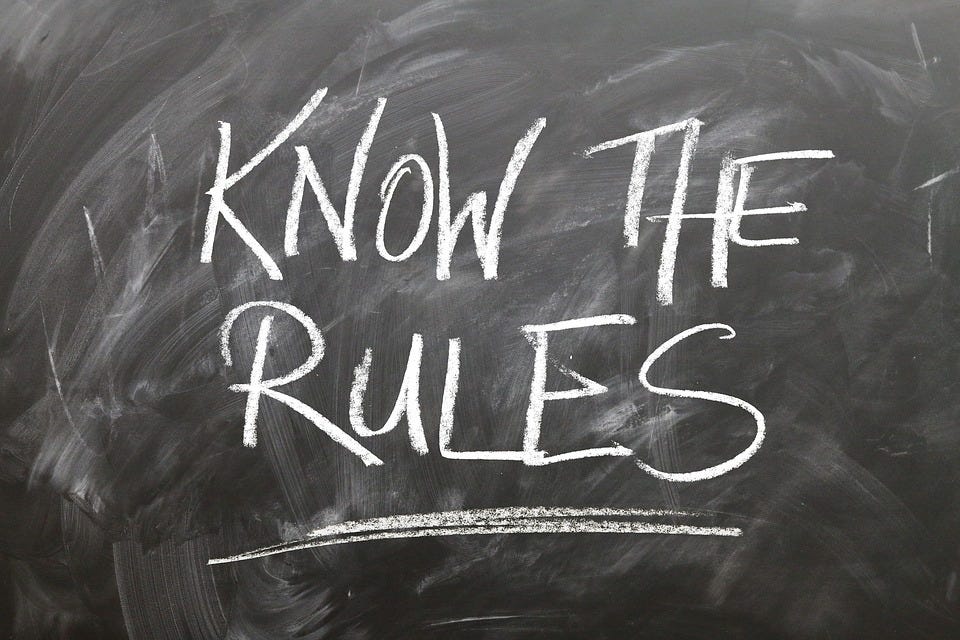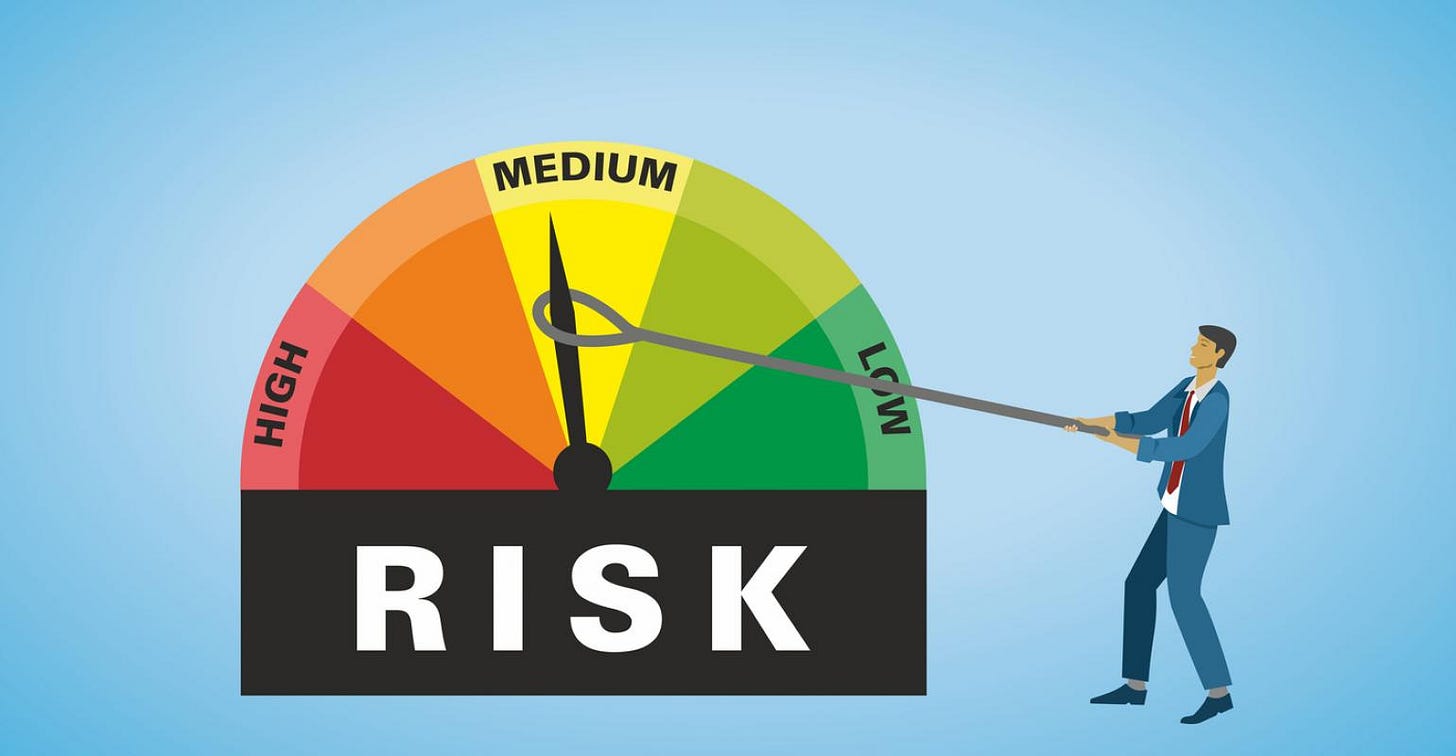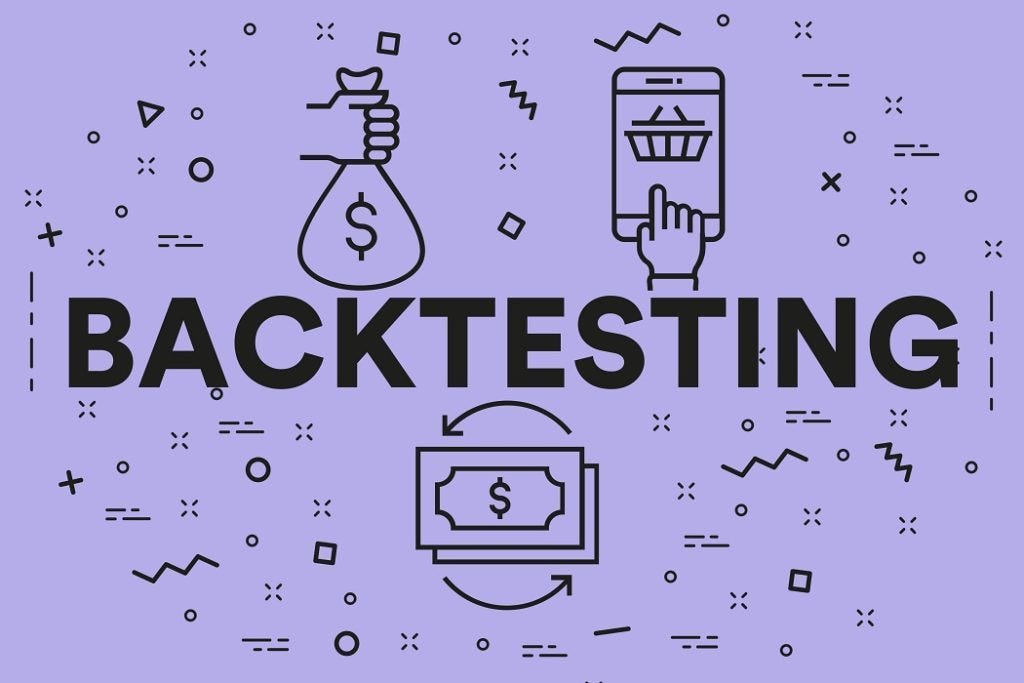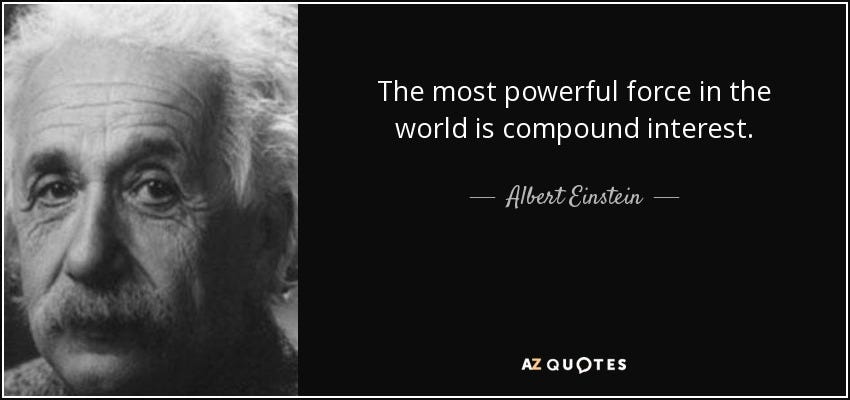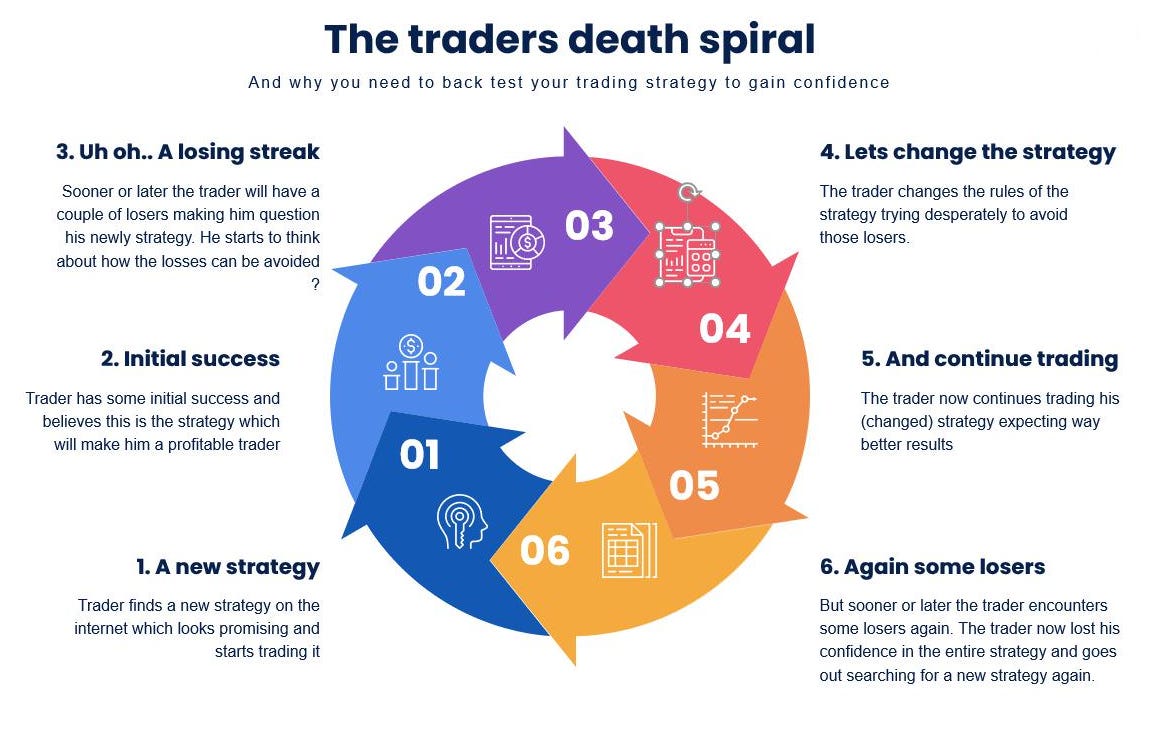Trading Journal #1: The Rules of the Game
In this first edition of the ArcTaurus trading Journal, we discuss one of the most important aspects of trading: creating your own system of rules to prevent emotional trading.
In today’s post we will introduce our new blog series: the ArcTaurus Trading Journal, where we will dive deep into all things trading - from strategies, risk management, automation, and more. Today’s post is about one of the most fundamental concepts: developing a system of rules and guidelines for you to follow to prevent yourself from making emotional mistakes.
It may seem obvious, but creating a system of rules is one of the most important and surprisingly challenging aspects of trading. Even institutional traders often struggle with this concept. As such, we won’t pretend that we have “the one and only answer” to this question. Instead, we will discuss a few battle-tested methods used by professional traders that help them identify their own weaknesses and improve upon their strengths.
These rules allow you to operate within constraints that push you to make exclusively data-driven decisions while avoiding emotions such as FOMO and greed. We highly recommend building your own system before ever making a single trade, and we’re here to help you define such a system. Let’s get started.
The Rules of the Game
First things first: it is extremely important that we define a few rules that we are absolutely never allowed to break. The reason why we want to be so strict with these rules is because we want to prevent ourselves from making emotional decisions instead of data-driven decisions. 99.99% of trading activity in cryptocurrency is executed by bots (yes, really) and therefore 99.99% of your competition has zero emotional capacity. Therefore we must remove emotion from the equation in order to better compete.
These rules may not apply to everyone, but the rules exist to constrain ourselves and give us a framework for trading. As someone who has been trading for almost 6 years, I will cover a few rules that have literally never failed me.
1. Create a Journal
You can have a physical notebook, a spreadsheet, or even just a word document. The key, however, is to take copious notes about all the details of each and every trade that you make. These include:
Entry price, exit price, and any stop loss/take profit levels. Also include your time frame - how long are you willing to be exposed to this trade?
The current market conditions. What is the prevailing trend? Sideways is a trend, too!
Your current emotional state (yes, really!) Are you tired? Hungry? Jittery from too much coffee? Include details about your state of mind when executing trades. You will thank us later!
When you reflect inwards on your emotional state, you will often find that you are attempting to enter a trade in “revenge” for a previous losing trade, also known as “revenge trading.” You may also notice that you’re chasing pumps or feeling FOMO, which is rarely the optimal time to enter a trade. Inward reflection helps slow you down and identify when you’re behaving irrationally.
The results of your trade. Include as many details as possible, and if you feel like it you can calculate various metrics such as your Sharpe ratio, MFE, MFA, etc.
Such metrics can help you evaluate your performance over time. They’re worth cataloging!
My favorite little hack for keeping track of trades is to create your own private Discord server. You can create channels for various topics/assets, include links, webhooks, and even integrate bots to automate a lot of your journaling activities! It updates across devices and can push notifications to all your devices as well. I highly recommend giving it a try.
Once you’ve created your journal, it’s important that you use it religiously! Making trades without journaling is like flying a commercial aircraft without making a flight plan - it’s reckless, and in a professional setting will get you fired! Yes, professional traders catalogue each and every trade that they make, and you should too.
2. Define your Risk
This next rule is one that every single professional trader will agree with: risk management is at least half the battle in being a profitable trader. The next Journal Entry will dive deeper into risk management, but for now we can discuss a few key points.
When maintaining a trading portfolio, you want to make sure that you don’t make significant losses in case something goes wrong. It goes without saying that you should never trade more than you’re willing to lose, but an extension of that is making sure that each individual trade is never able to sink your portfolio. That means trading with a small percentage of your overall portfolio and clearly defining conditions that invalidate a trade where you close the trade and walk away, no matter what.
A good rule of thumb is to never risk more than 1% of your portfolio per trade (this applies to crypto, traditional markets tend to be less risk tolerant). If your portfolio is worth $1000, you should never be at risk of losing more than $10 per trade. However, this doesn’t mean you should enter a $1000 trade with a stop loss 1% below the current price - you’re extremely likely to get stopped out as 1% moves happen every single hour in the crypto market. Instead of trying to snipe the perfect entry with maximum exposure, it’s better to give your trades “room to breathe” while still minimizing risk.
For example, in this scenario we can enter a $100 trade with a stop loss up to 10% away from our entry price, which still only risks 1% of our portfolio on this trade. This gives your trade room to withstand spikes in volatility while still giving you sufficient exposure to the market. This is merely an example of how you can more safely enter trades while still keeping your risk exposure at 1%, and should not be used in every situation.
For more information on risk management, stay tuned for our next blog post. For now, let’s move on.
3. Backtest, Backtest, Backtest
It’s important to always be adaptable, but by trying too many new things you are prone to over-trading and death-spiraling. It’s common for traders to trade using a new strategy or in a new asset, make some profit, and then assume that the strategy is successful. In fact, it’s more than likely that their success was purely luck and not based at all upon a winning strategy.
Backtesting is the process of testing a strategy on historical data to determine the performance of the strategy. This is most often done in an automated fashion (either using a platform such as TradingView and Pinescript, or traditional programming such as Python) but can also be done manually as well.
In Journal Entry #3 we will discuss backtesting, but for now I’ll discuss a few key points:
Backtesting is time-consuming and easy to overlook, but is one of your most important tools.
It is important to remove emotion from backtesting (use code if you know how) so that you don’t lie to yourself, e.g. saying “I would have never taken that trade” to avoid invalidating a strategy.
Adhere to your trading rules 100% of the time, do not cut corners.
If you’re backtesting using code, USE A LIBRARY. DO NOT WRITE YOUR OWN BACKTESTS. For Python, I recommend backtesting.py - it’s robust, well-known, and trusted by thousands of developers.
Remember: Past performance is not an indicator of future success! Always know that market conditions can change, especially considering the last 12 years have been a mostly up-only market. What worked in 2016 may not work in 2023.
Here’s an oversimplified example of backtesting: let’s say your strategy tells you to buy whenever the 21 hour unweighted moving average crosses the 55 hour unweighted moving average. Go back as far as you can in time and test your trading skills on that signal alone. Use TradingView’s “Replay” button to go back in time without being able to see what the price does - DON’T CHEAT!
Try to define your time frame, entry, exit, and stop-loss levels and slowly move the Replay forward until either the trade is closed (according to your own rules) or you get stopped out. Catalogue each and every trade during backtesting and calculate your results at the end to determine if your strategy is a winner.
While it’s important to note that while you don’t necessarily need a majority of your trades to be profitable, you just need your winners to outweigh your losers - it’s generally a better strategy to have consistently small wins compared to hoping for big winners.
This leads me to my fourth and final rule that I’ll share here today…
4. Focus on Repeatedly Compounding Small Wins
Albert Einstein is famous for saying that compound interest is the most powerful force in the universe, and for good reason. I won’t use the stereotypical “if we make 1% per day” meme, as a consistent return of 1% per day is extremely unlikely. However, the lesson stands true - if you focus on compounding small wins over longer time frames, you’ll have exposed yourself to far less risk while consistently increasing your portfolio size.
You’ll also be exposed to far less volatility, and be able to withstand large drawdowns in the market much better than if you were trading with large size chasing big winners every trade.
This is a seemingly obvious point, but most amateur traders still don’t focus on this aspect enough. In order to help you focus on this, here’s a few tips:
Set clear and inviolable time frames for trades. Don’t be exposed to a single trade for too long.
Take profits early and often.
Walk away after a trade.
That third point is exceptionally important - it may be tempting to enter another trade after a big winner (or loser) but it’s important to trade with a clear head. Regardless of how a trade goes, I always recommend walking away for at least a few hours, if not the rest of the day, after a trade closes.
This leads me to my final point…
5. Know When to Walk Away
Have you ever had a losing trade that caused you to enter a new trade in the hopes of making back your losses? It’s an all-too-common mistake that can end a trading career before it ever takes off. Revenge trading is a real threat to your sanity and your portfolio, but if we adhere to the aforementioned rules we can simply avoid making this mistake.
As you can see in the graphic above, it is common for traders to try to “make it back” in the next trade, which leads traders to cut corners, ignore their own rules, and expose themselves to too much risk. Furthermore, it’s common for traders to update their rules after a single losing trade, even though losing trades are a completely normal part of a successful strategy. There is no such thing as a strategy that works 100% of the time.
As stated in rule #1, you should journal every single trade. In fact, I recommend that you never open a new trade before your last trade is fully catalogued and reflected upon. This gives you time to calm down, reflect on what you did right/wrong, and also gives the market time to develop into a new setup that you can turn into another successful trade.
If you’re using an automated strategy such as a trading bot with ArcTaurus, you can remove emotion from the equation entirely and allow your strategy to continue to work without ever trying to “revenge trade” your way back to break-even.
If you’ve made it this far, thank you for reading our first Trading Journal entry! As you can see, a lot of the rules apply to manual trading. If you’d like to remove emotion from your trading without ever needing to know how to program, visit our website or check out our Linktree to learn more about ArcTaurus - we can help you automate your trading strategies without writing a single line of code!
We are launching in Summer 2022, so stay tuned for our initial release. In the meantime, check back in with us soon as we’ll be posting new Trading Journal entries in the coming days and weeks. The next topics include:
Risk Management
Backtesting Strategies
Swing Trading vs. Scalping
and much more!
Stay tuned!

